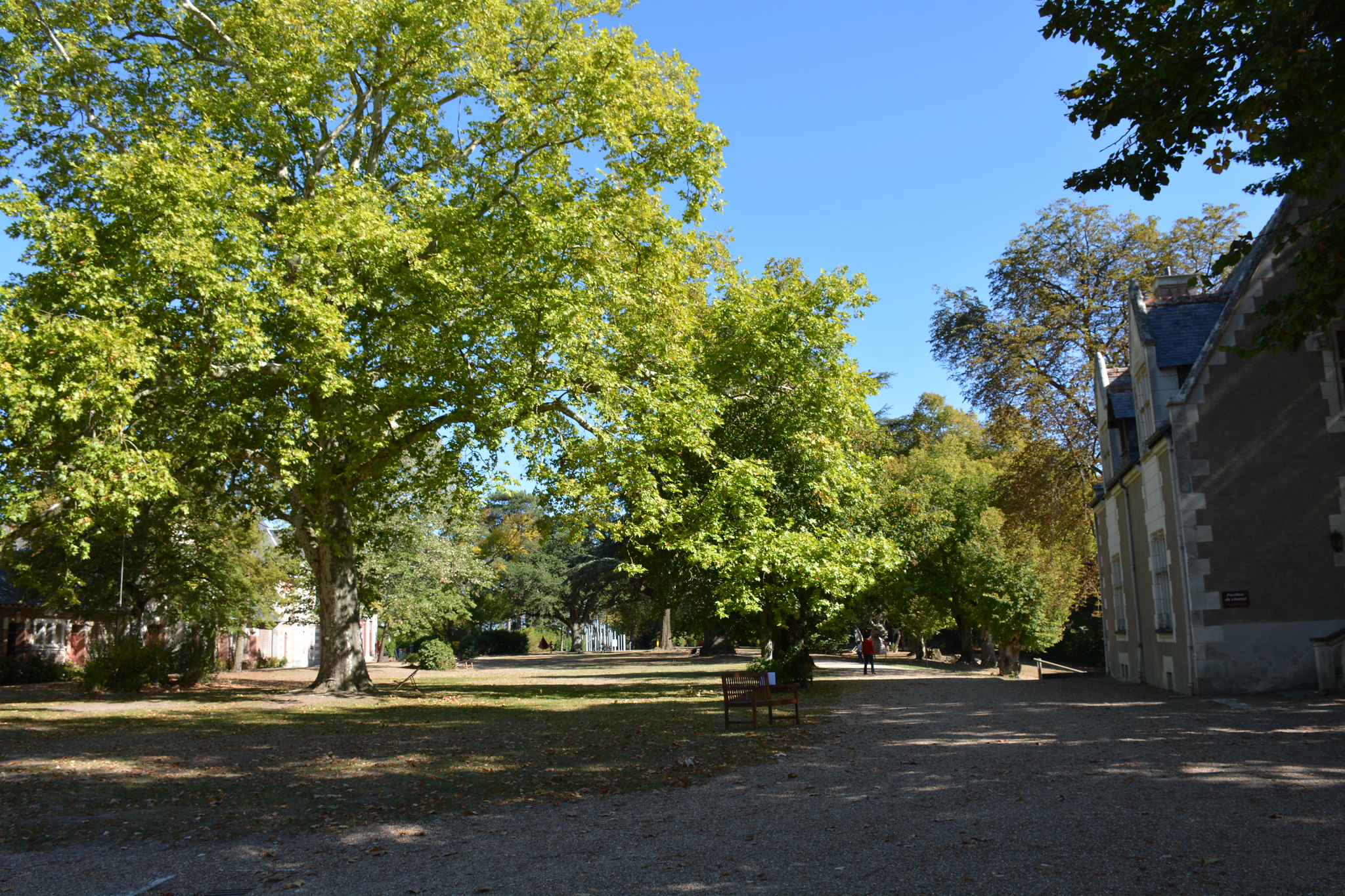In the shade of ancient oaks

Monts
In the shade of ancient oaks
Easy
1h20
4,6km
+55m
-55m
Loop
Embed this item to access it offline
Attachment
- Downloadpdf
Balade en Touraine : A l'ombre des chênes centenaires - Monts
Credit: Balade en Touraine : A l'ombre des chênes centenaires - Monts - Département Indre-et-Loire
Description
- This 4.5km ramble, guided by yellow waymarkers, starts in front of the former orangery (reception-shop) located close to the chateau. It was here that in 1937, the American Wallis Simpson married the highly controversial Duke of Windsor, who had just abdicated the English throne. Follow the path that extends alongside the ancient vegetable garden and orchard. Here, over 40 historical apple species, pears and plums are cultivated. Turn left onto the path formerly bordered by vines. The plateau was occupied by a 35-hectares vineyard, ideally situated on "Les Perruches" - silty, clay soil containing flint.
- You will come to the wine storehouses built in 1866. Measuring 1000m², this building was used for wine-making. hree large wine presses used to extract the juice from the grapes are still in place. Reffered to as "American" because of their modern style, these wine-presses could be used by a single person.
To the right of the storehouses, notice a gothic style manor where the estate manager lives.
Turn left then take the second path on your giht. - The forest paths extend those of the park. You will come to the Saint Laurent valley. This stream feeds a pond created by the owner of the estate. Upstream of the pond, under water for some part of the year, is a marshland of about 2 hectares where "sedge", irises and other plants that like to grow underwater. his humid ara constitues a biodiversity reserve withing the estate. You can watch moorhens weaving in and out and hear frogs croaking.
At the crossroads, go right to follow the gently sloping path, then left and right again. - The forestry management, practiced regularly since the estate was created, favoured the development of very large oak trees, to the detriment of regeneration trees. Today, bracken dominates the underwood, preventing the young sedlings from growing. A change in practice is therefor expected. Branch off to the left in the direction of a clearing and then right.
- After the shade of the underwood, walk along the clearing where the sun rays rach the ground. Hunting hides are a remoinder of the wildlife management on the estate. There is a large number of wild species here. It is not rare to see pheasants, hares, deers, stags or wild boars. Hunting is used to manage the numbers of some wild animal populations.
Branch off to the right at the next crossroads. - You will once again come to the plateau which was formerly covered with vines. The "Cot" grape variety produced a robust wine which benefited froim being kept, and won first prize at a wine award in 1874. However, around 1888, an invasion of Phylloxera, a kind of destructive aphid, destroyed the vine stock. The vineyard was replanted with American transplants.
Turn left at the edge nof the wood, continuing to follow the yllow waymarkers. After about 500 metres, turn left. - On your right, notice an old pollard tree. These trees, spreading thought the forest, are witnesses to a time when "bocage" farmland criss-crossed by hedges and trees, took up an area larger than the plateau. The strange shapes of these trees, protruding from the hedges, are a result of the regular pruning of their branches. They provide shelter for numerous protected insects.
- You will come to the guardian's lodge on your left. Built in the Anglo-Norman style, a very popular style typified by roofs bursting with flat tiles, overhanging roofs offering protection from the rain, awnings over the entrance and windows, and door frames made from bricks made in the ovens of the Candé estate brickworks. Return to the oirangery by the large path.
You can continue this ramble with a circuit : In the steps of Santiago Drake Del Castillo.
- Departure : Candé estate
- Arrival : Candé estate
- Towns crossed : Monts
Forecast
Altimetric profile
Recommandations
In the forest
Information desks
4 Rue du Château, 37190 Azay-le-Rideau
Rd 910, 37250 Montbazon
Report a problem or an error
If you have found an error on this page or if you have noticed any problems during your hike, please report them to us here: